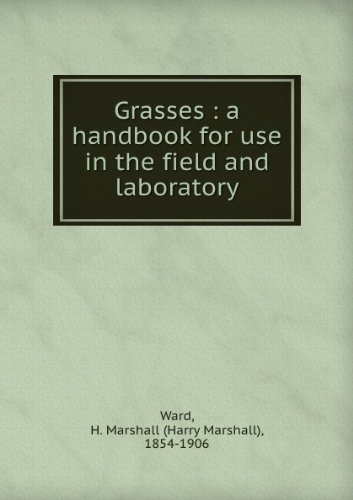
Grasses: a handbook for use in the field and laboratory
by H. Marshall Ward
Publisher: Cambridge University Press 1908
ISBN/ASIN: B004DBB7D6
Number of pages: 222
Description:
The book is not intended to be a complete manual of grasses, but to be an account of our common native species, so arranged that the student may learn how to closely observe and deal with the distinctive characters of these remarkable plants when such problems as the botanical analysis of a meadow or pasture, of hay, of weeds, or of 'seed' grasses are presented, as well as when investigating questions of more abstract scientific nature.
Download or read it online for free here:
Download link
(multiple formats)
Download mirrors:
Mirror 1
Similar books
 The Chemistry of Plant Life
The Chemistry of Plant Lifeby Roscoe Wilfred Thatcher - McGraw-Hill
This book may serve as a text or reference book for students of plant science who are seeking a proper foundation upon which to build a scientific knowledge of how plants grow. It shall serve also as a stimulus to further study in this field.
(18732 views)
 Botany for Beginners
Botany for Beginnersby Ernest Evans - Macmillan
This book has been prepared as a guide and companion to beginners in the practical study of plants. The method is to examine the plants from as many points of view as possible, and to draw conclusions from actual observations.
(16967 views)
 Study Guide to the Science of Botany
Study Guide to the Science of Botanyby Eric Guinther - Wikibooks
This Study Guide to the Science of Botany is a textbook intended to establish a course of study in the subject of Botany, utilizing articles provided in Wikipedia, with links to other relevant web sites and other Wikibooks as appropriate.
(15566 views)
 Mushrooms of America, Edible and Poisonous
Mushrooms of America, Edible and Poisonousby Julius A. Palmer - L. Prang & Co
This book for popular use, rather than for students of botanical science; all technical terms are, therefore, as far as possible, avoided. The identification of species is a safe guide, and is the only means of knowing what mushrooms should be eaten.
(11443 views)